Science of
the Forty Acres
Discovery starts here in
The University of Texas at Austin’s
College of Natural Sciences.
Over the years, the spaces and places of our College have been where Nobel-Prize winning research happens, where game-changing new approaches to science and math education begin, and where transformative people and ideas came together to change the world. Here on what’s known as the Forty Acres scientists discovered folic acid, which today prevents thousands of birth defects; created the scanning electrochemical microscope, which led to countless 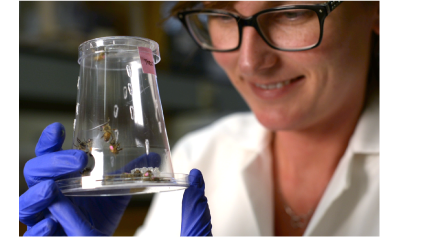
Within the walls of our buildings and on the campus grounds, you’ll find Texas Science at work.medical and technological breakthroughs; and developed the first secure sockets layer, the basis for safe online transactions.
And Texas Science has much more to come. The same sacred ground that brought about historic discoveries in physical sciences, life sciences, technology, math and human research is also the foundation for 21st Century discovery. Today’s scientific leaders join with a new generation of science and math learners, pursuing the next breakthrough together.
Within the walls of these buildings, you’ll find Texas Science at work. Its reputation for excellence is evident in amazing supercomputers and powerful telescopes; in labs where world-champion robotic soccer-players compete and where our award-winning Freshman Research Initiative transforms lives; and in new interdisciplinary zones where scientists from vastly different backgrounds, at the top of their fields, come together to find answers to society’s most pressing problems. And beyond walls, in the green spaces of our campus, natural life all around us inspires new findings related to sustainability and life’s diversity, beckoning with the promise of advances in medicine, clean energy and agriculture.
Amid it all, Texas Science is found in yet another space on campus: in the faces of our amazing students and faculty. Top-ranked mathematicians and scientists, MacArthur ‘geniuses’ and exploratory world-changers, astrophysicists creating new knowledge about the vast outskirts of our universe and nanoscientists charting new discoveries at an impossibly miniscule scale. They’re all here, where discovery starts.
A Campus Icon
The UT Tower
A 307-foot sentinel at the heart of the Forty Acres, the Main Building’s Tower is one of Texas’ most notable landmarks. Just a foot shorter than the nearby Capitol Building, the UT Tower was built on a hilltop, higher above sea level than its neighboring landmark. The building interacts with — and holds critical information about — the natural world: The National Weather Service has long used the Tower to help measure Austin’s cloud ceiling, and lately a peregrine falcon has made its home in the belfry. Massive collections of plant specimens and life sciences texts, beautiful images of scientific discovery on the UT campus, and artwork that celebrates the wonders of nature over time all have a place within Main. And over the years, eight University presidents occupying the top leadership office on campus here on the fourth floor did so after having started as faculty members in the sciences.
photo by Mike Holp
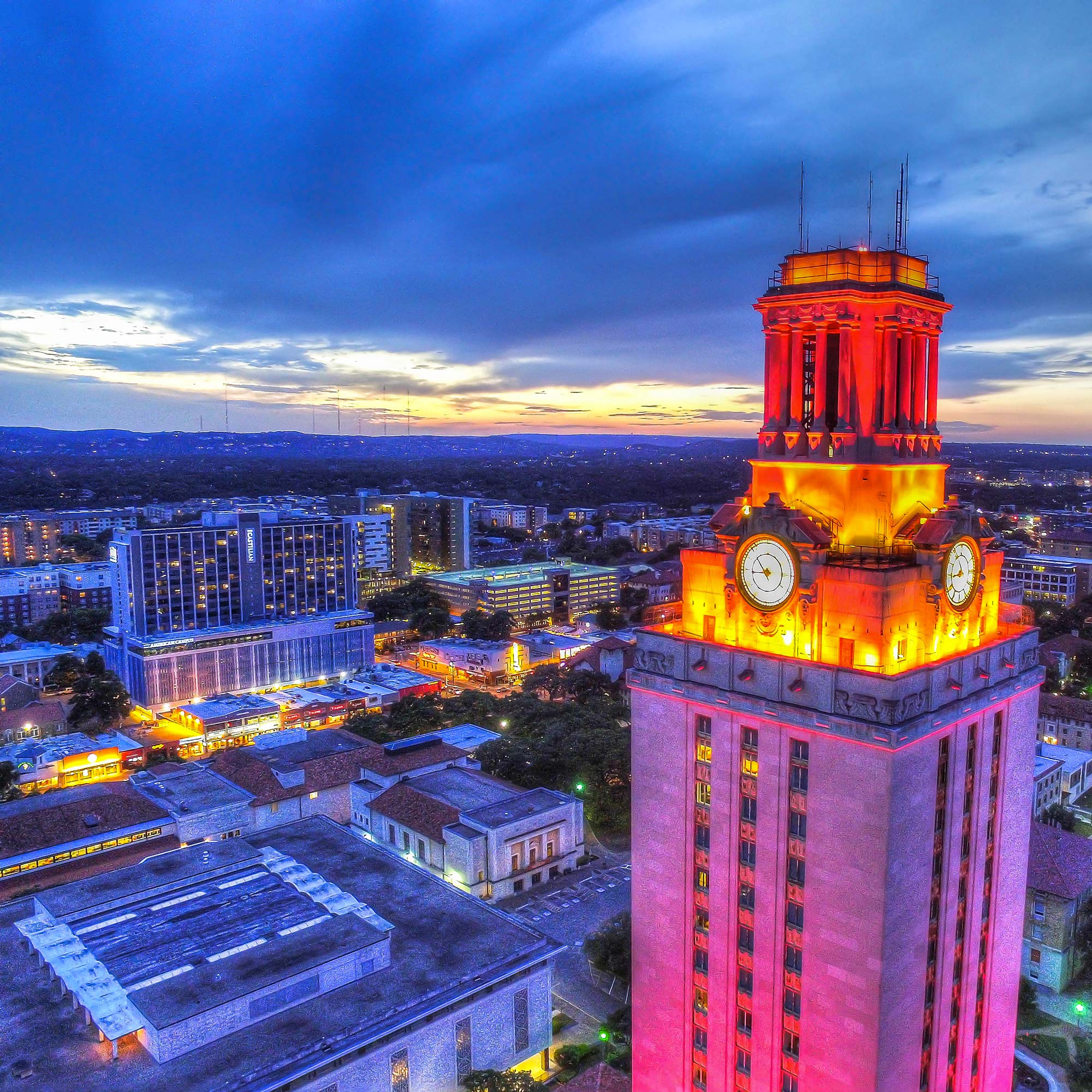
A female peregrine falcon, nicknamed “Tower Girl,” nests in a wood box high up on the north side. The public learns from scientists in the University’s Biodiversity Center who help explain the usually solitary falcon and what her experience as a wild urban predator tells us about broader issues of land use and species interaction in Texas.

The Life Science Library on the second floor displays a sculpture on loan from New York’s Metropolitan Museum of Art. Sculptor Walter Dusenbery used geometric calculations to guide how limestone would be carved into a structure that celebrates the wonders of nature through time. Pedogna is made from a type of limestone called travertine, containing mineral and biological impurities within the white stone that imbue the piece with a rainbow of hues. The sculpture is one of several scientifically or nature-inspired art pieces procured by Landmarks, the university’s public art program, which makes art free and accessible to all on campus.
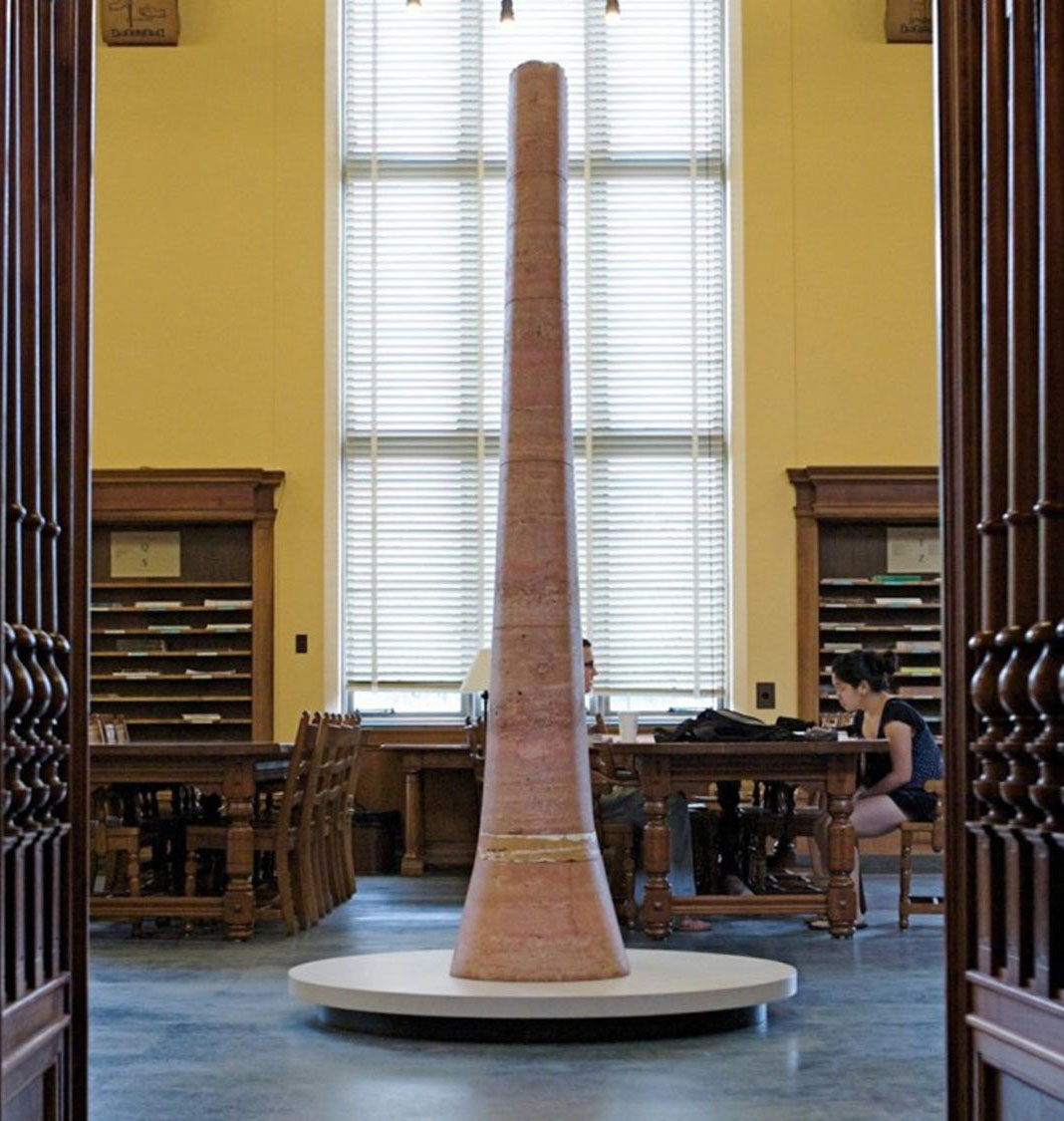
The Billie L. Turner Plant Resources Center on the first floor is the largest collection of plant specimens in the southwest U.S. It even contains a specimen that traveled on the HMS Beagle, having been collected by Charles Darwin himself in 1847.
Science Out in the Open
The UT campus
University Avenue and Inner Campus Drive
Between more than a dozen buildings where Natural Sciences research and learning take place are spaces where our Texas Science community explores, investigates and engages with life all around in the great outdoors. Natural habitats like Waller Creek and the UT turtle pond offer a scientific sandbox, where students of the life sciences have up-close encounters with organisms large and small, with whom they share the campus. Among the researchers are leading biologists in our top-ranked ecology, evolution and behavior program, including several members of the National Academy of Sciences. Their research is illuminating new insights into the health of critical species, from honeybees to salamanders. The groundbreaking research these scientists do happens not only on campus and in biological science buildings such as J.T. Patterson Labs, Neural and Molecular Science, Moffett Molecular Biology and Biological Laboratories but also at UT’s top-notch field stations, which are located off the Forty Acres.
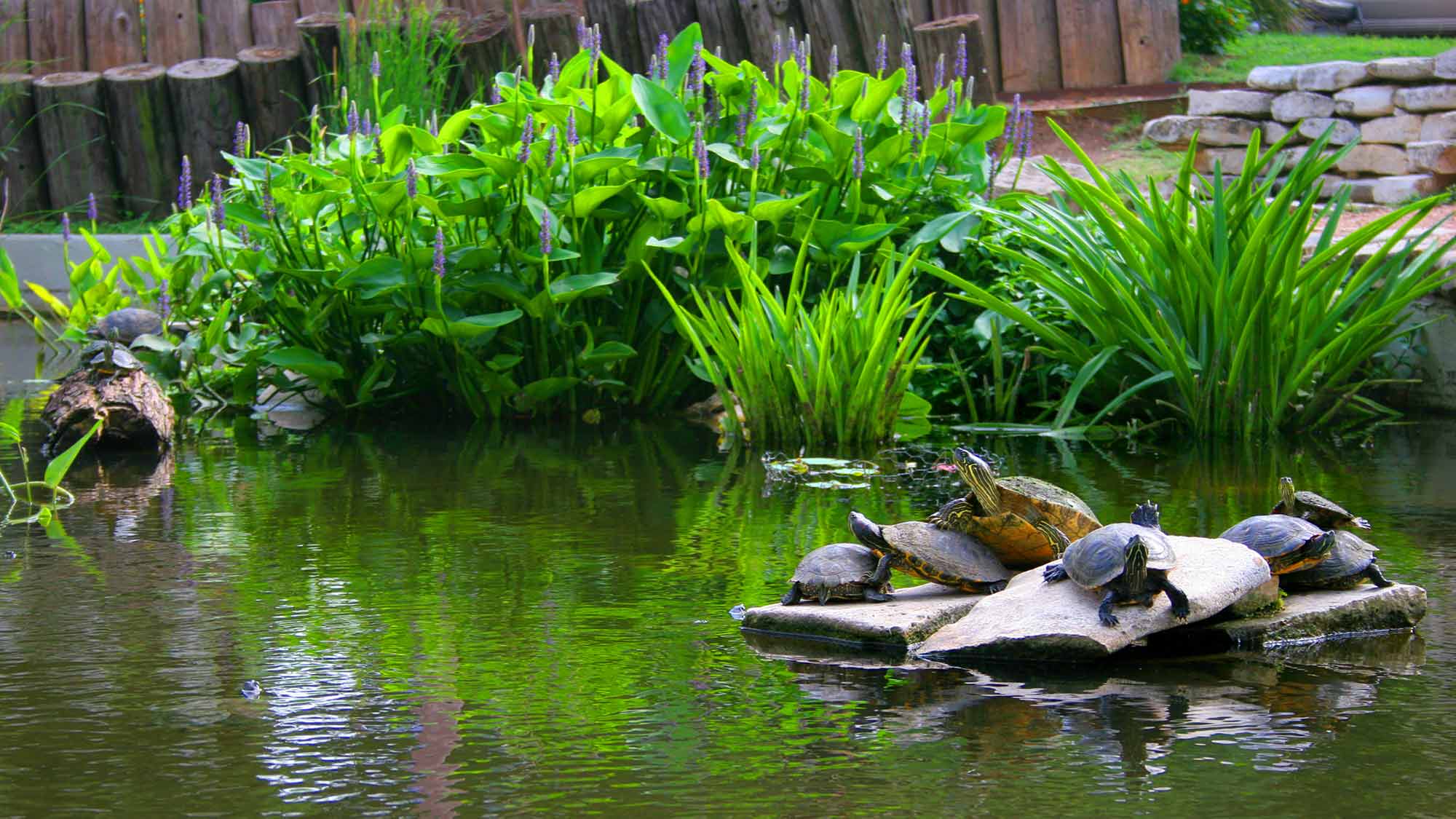
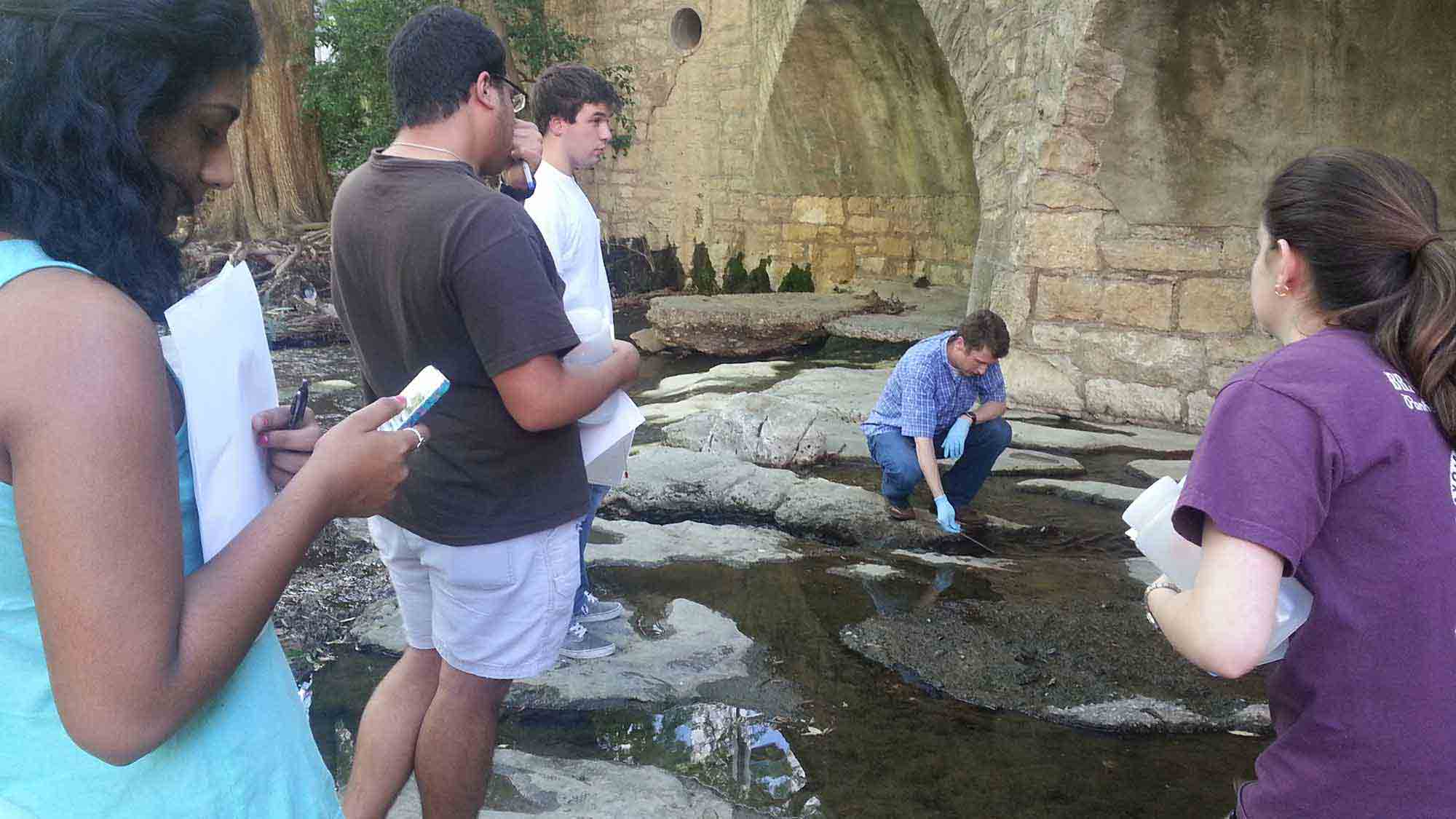
Waller Creek, a verdant corridor teeming with life, is a little bit of wilderness tucked away in the heart of campus. While its picturesque waters and the nearby slopes enhance the beauty of the Forty Acres, it also serves as a laboratory for students and citizen scientists to get a taste of field work. The creek boasts an impressively diverse list of species, with more than 500 kinds of plants, animals, insects and fish, according to the team of biologists, geoscientists and volunteers who maintain a digital archive of the biota of Waller Creek. Members of the Freshman Research Initiative examine sources of bacteria in the creek, following in the footsteps of earlier scientists whose discoveries there led to breakthroughs. For example, a rare, fast-growing type of blue-green algae found only in Waller Creek was first identified in the 1950s. Today, because of its tendency to feed off of sunlight and carbon dioxide, it is being explored as a potential resource to fight greenhouse gas emissions.
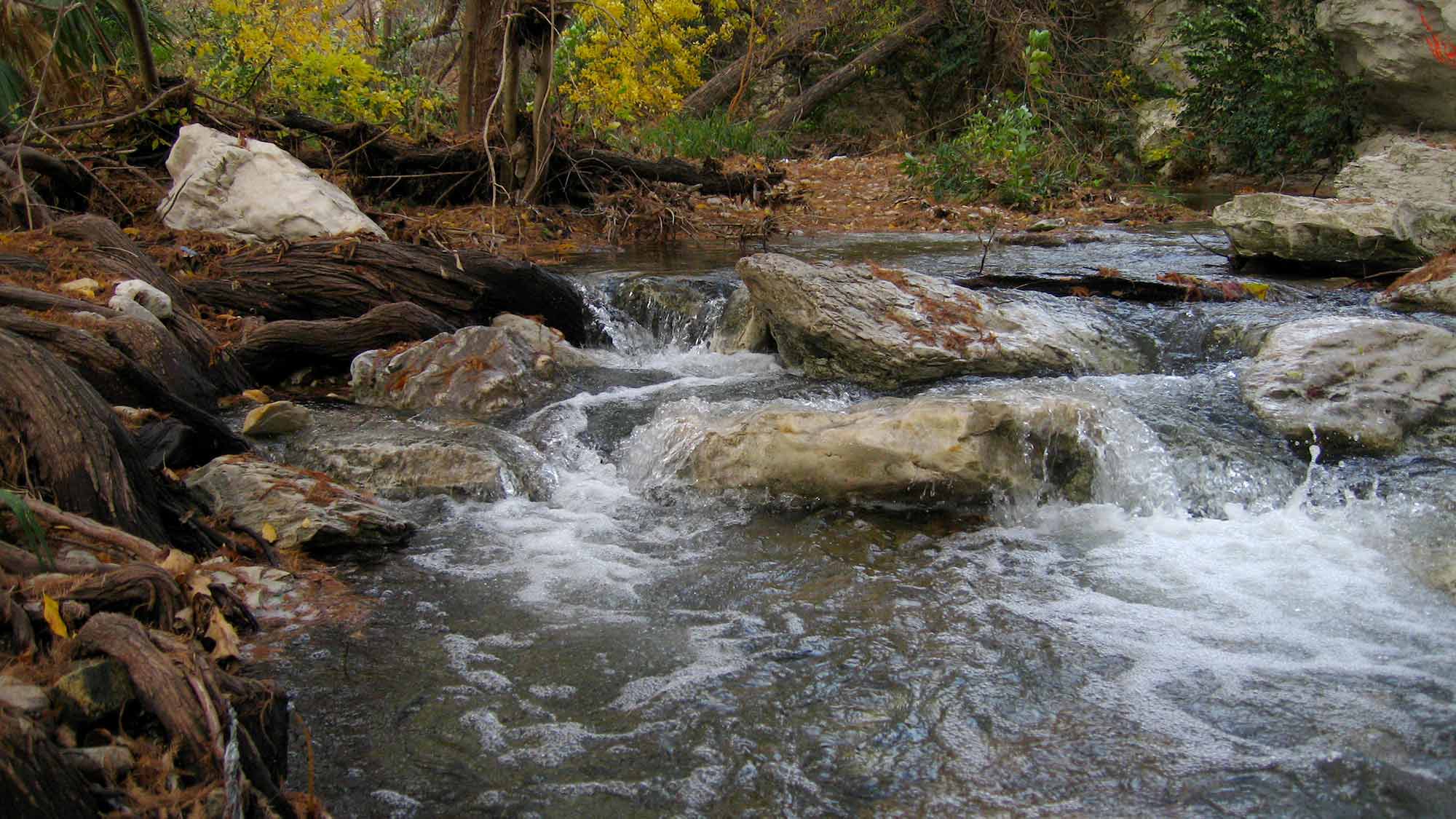
North of the UT Tower and outside of the Biological Laboratories, the turtle pond serves as a home to dozens of turtles from different species. It is both a peaceful study spot for Longhorns and a habitat for biology students to observe.
Students and faculty involved in one research lab within the Freshman Research Initiative are working to discover new strains of antibiotics within the soil of the UT Austin campus.
A Center for Student Discovery
Painter Hall
In Natural Sciences, the largest college at The University of Texas at Austin, Painter Hall is a hub for the student experience. Its warm and welcoming spaces prompt students to follow their curiosity, find their passion and identify their life’s pursuits. Student government leaders, career counselors, honors scholars, world travelers, undergraduate researchers and future health professionals all are found here. Painter is home to the nationally renowned UTeach program, the Texas Institute for Discovery Education in Science and the award-winning Freshman Research Initiative, which is the nation’s largest undergraduate research program at a single university. A common thread throughout the building is making STEM education meaningful by putting students in positions to learn by leading, doing and exploring.
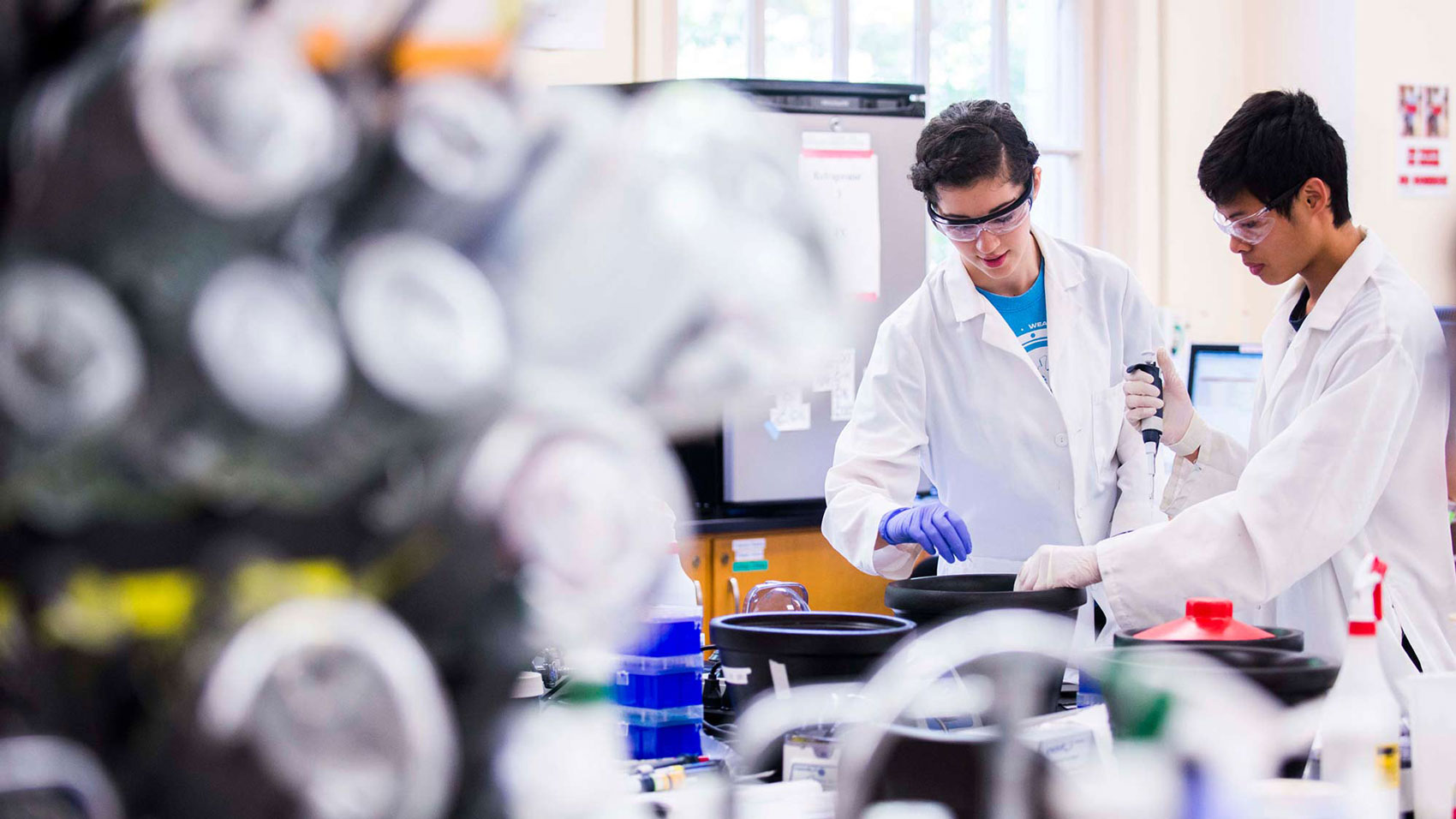
The Freshman Research Initiative, which has won awards for effective and innovative experiential learning programs, is unique to Texas, and it touches the lives of more than 1,000 students annually. Hear some of their stories of life in the lab.
10 Things to Do in Painter Hall
- Find a research lab.
The Texas Institute for Discovery Education in Science (TIDES) has experts to help you. - Prepare to teach.
The nationally recognized UTeach program helps you get a teaching certification. - Explore a health profession.
The Health Professions Office is a resource for future doctors, dentists, veterinarians, physician’s assistants and more. - Make career plans.
Career Services can hook you up with job interviews, resumé-writing workshops and a lot more. - Track down a scholarship.
The College’s Office of Honors and Scholarships keeps track of scholarship opportunities especially for high-achieving science students. - Plan to study abroad.
The TIDES office is a resource for this, too. Stop by early in your time at UT so that your semester(s) abroad are planned to work with your degree pathway. - Find out about college honors.
Honors programs in the college can foster faculty-student collaboration and help you take your science game to the next level. - Land a killer internship.
Both TIDES and Career Services can help you find the right internship for you, some of which offer course credit, too. - Find your tribe.
More than 50 student organizations in the College offer good ways to get involved, while making friends, developing as a leader, exploring interests and skill-building. - Head to the roof.
Friday and Saturday nights there are public viewings from the rooftop telescope led by the Department of Astronomy. It’s free and makes for a perfect date night.
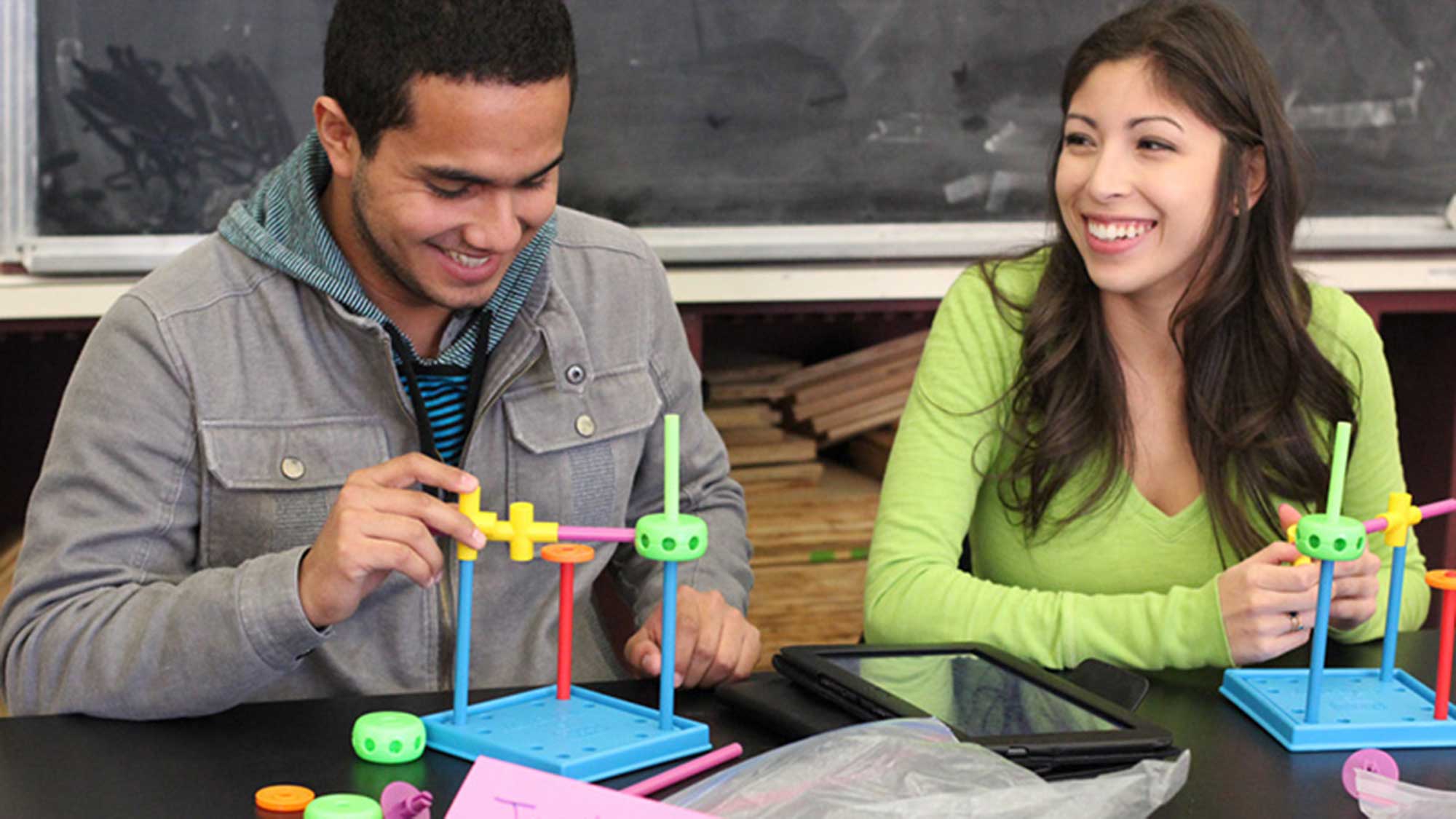
The fifth floor of Painter Hall is a base for student organizations and engagement. Texas Science offers more than 50 groups that allow for connection, leadership, service and development. Some small learning communities also have their base here. One example is Women in Natural Sciences, a group that brings mentors and new students together for academic discussions, community outreach and even annual international service trips.
Transformative Technology
Gates-Dell Complex
Computer scientists in our top-ranked Department of Computer Science envision a robotic soccer team that could beat human athletes at the World Cup by the year 2050. These visionaries, among the world’s leading researchers in artificial intelligence, work alongside top experts in quantum computing, cyber security, data sciences, and more in the centrally located Gates-Dell Complex. The place is named in part for one former Texas Science student Michael Dell, CEO of Dell Technologies. Another name is recognizable, too; Microsoft founder Bill Gates had among his first and most influential hires another Texas Science alum, Bob O’Rear. This is a spot where top minds in this department and in the Department of Statistics and Data Sciences come together and make their way toward changing the world.
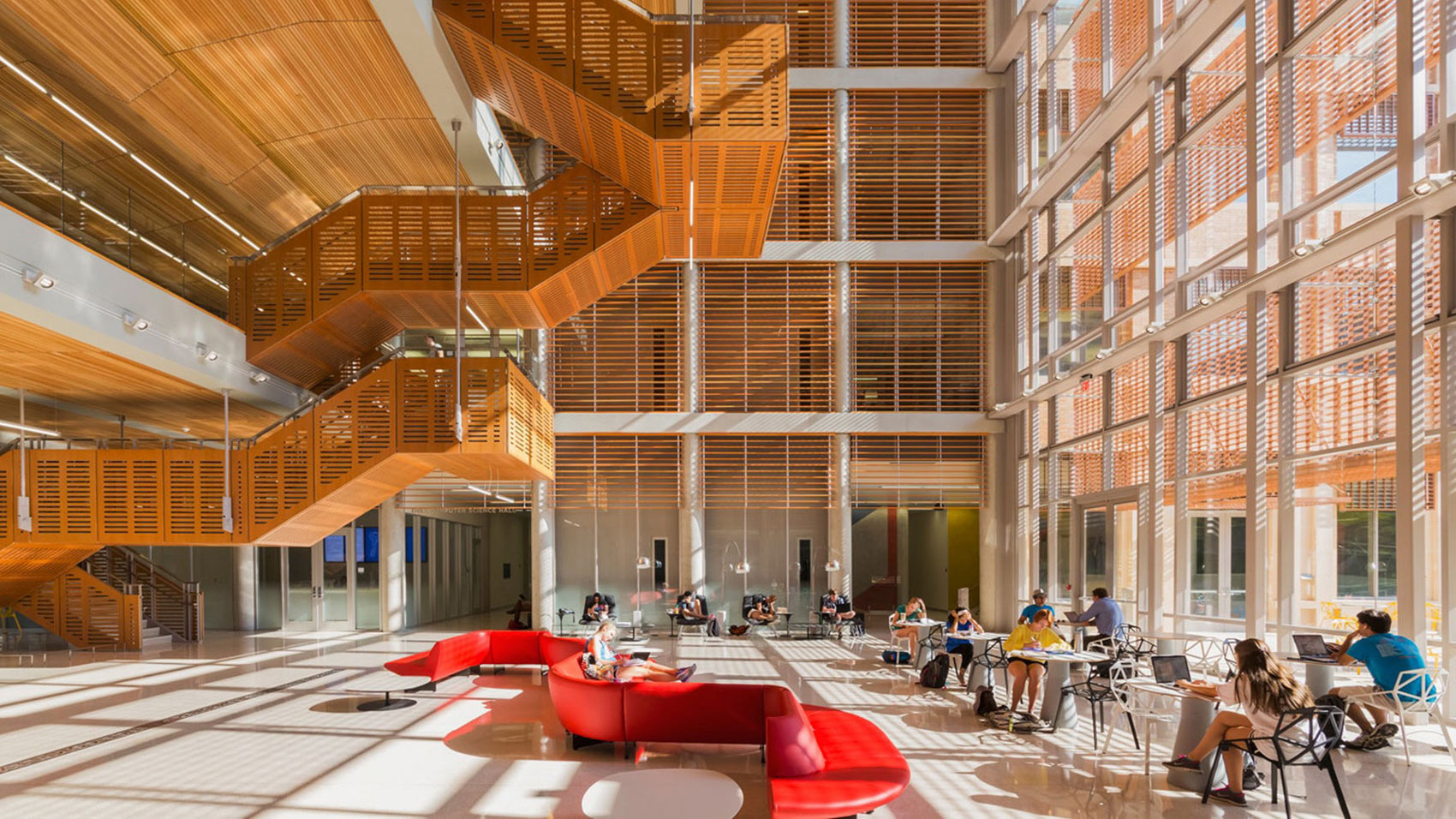
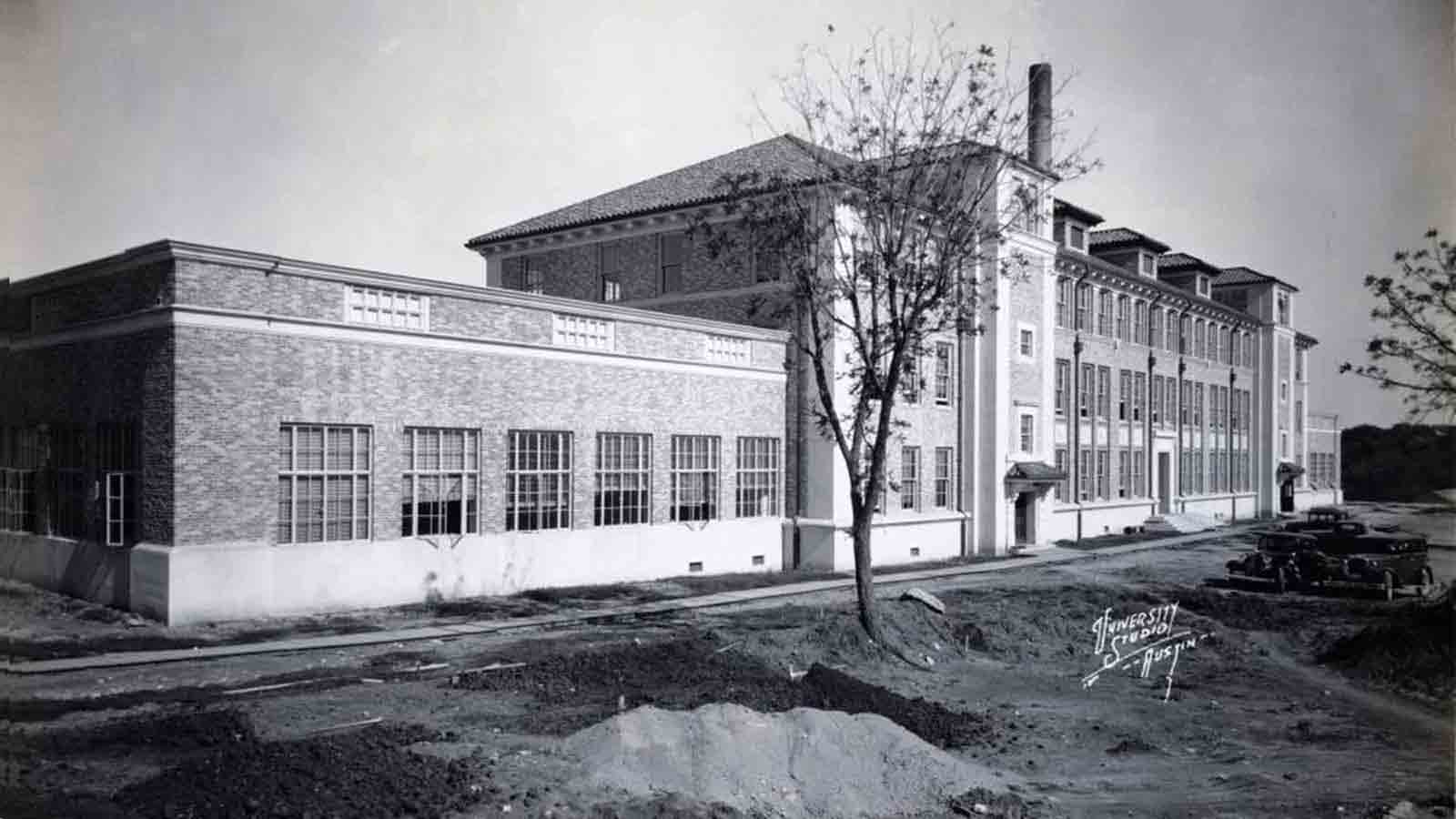

In March 2013, the Bill & Melinda Gates Computer Science Complex and Dell Computer Science Hall replaced Taylor Hall, an earlier home for computing innovations.
In the Artificial Intelligence Laboratory, computer scientist Peter Stone and his lab program this championship robotic soccer team, a frequent winner at the international RoboCup competition.
Faculty members here who are world experts in quantum information explain the mind-boggling future possibilities of quantum computing.
Uncovering Nature’s Secrets
Norman Hackerman Building
Eye-opening discoveries about some of the world’s most complex mysteries take place here in the Norman Hackerman Building, where neuroscientists, chemists, biomedical researchers and students come together to grapple with pressing questions about the intricate systems that undergird our lives. Understanding the human brain, unraveling ways to stop cancer—these and other goals drive the people who work here every day. As Jonathan Sessler, a chemistry professor who oversees one of these labs, observes: “Rome wasn’t built in a day, and if you are doing science, you realize that Mother Nature does not give up her secrets easily.” That’s not stopping him or the other leading scientists here and in the Forty Acres’ other centers of biomedical research discovery, where dogged commitment to discovery is helping to change the world.
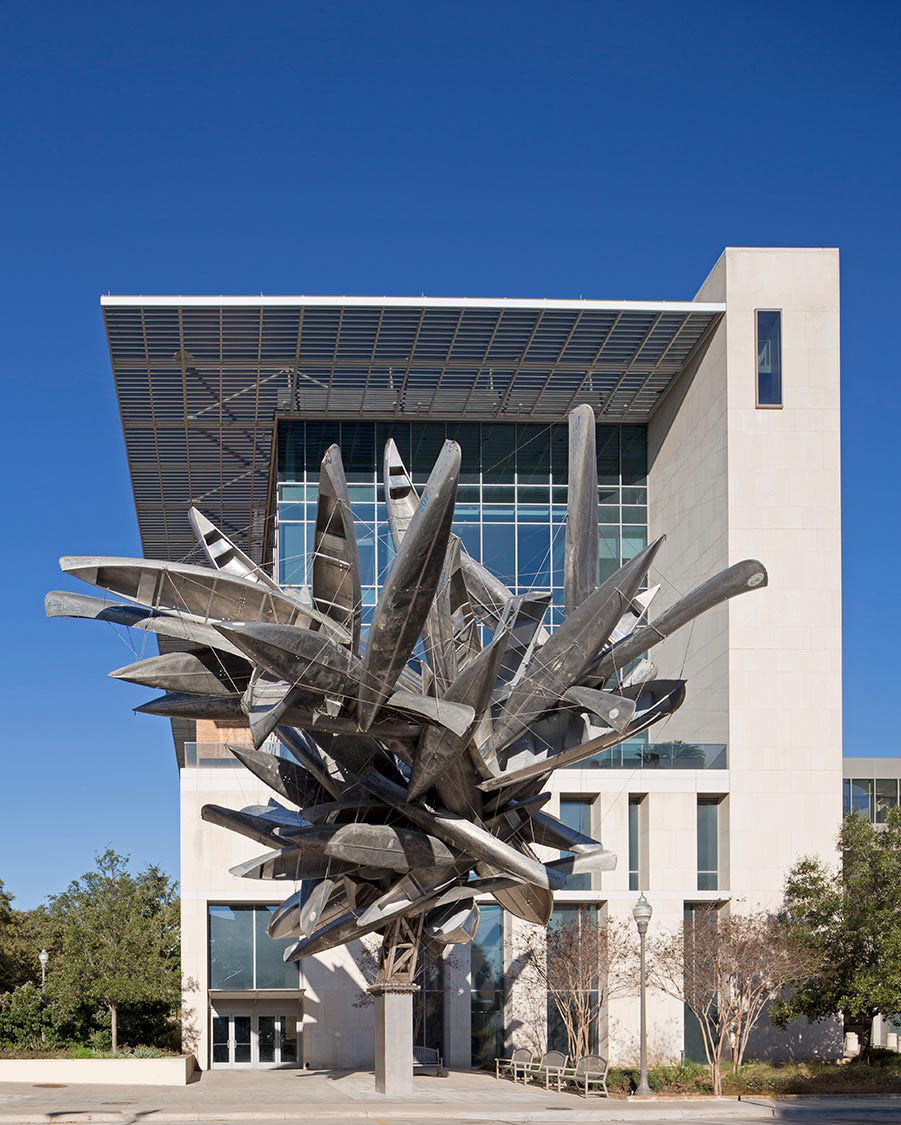
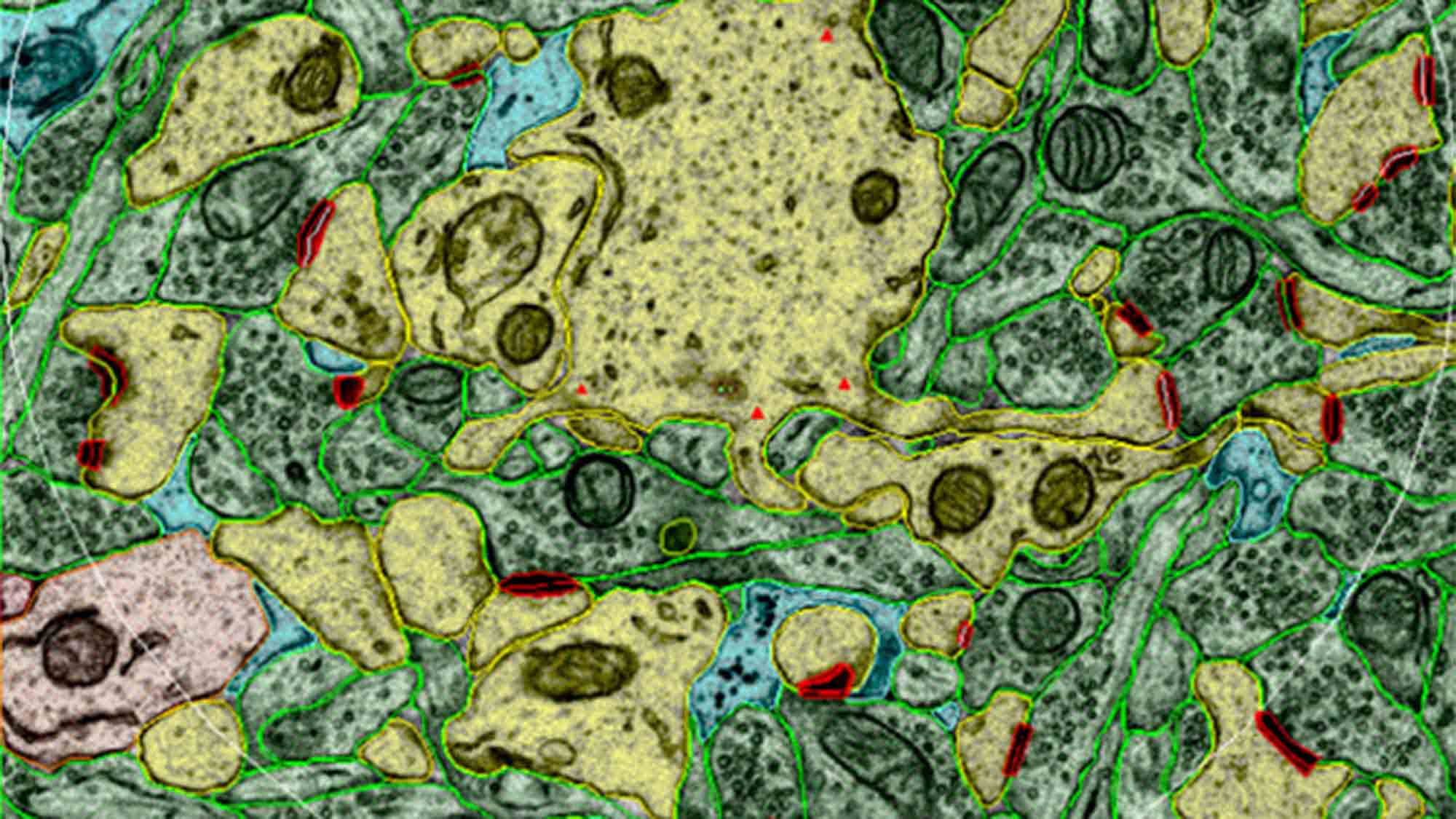
Can you take a snapshot of a memory within the brain—elusive and diffuse as a wisp of smoke, encoded like some secret spy code in the shapes and sizes of delicate connections between brain cells? Neuroscientist Kristen Harris is aiming to do just that by pioneering methods for reconstructing the 3D structures of synapses and other important features of the nervous system using electron microscopy. Her work is leading to a deeper understanding of the physical changes that occur in the connections between brain cells as we make memories and learn, as well as how diseases like Alzheimer’s alter brain structures. Harris’s research is part of the National Science Foundation’s Brain Initiative, which is pursuing one of science's grandest challenges: understanding how the brain works.
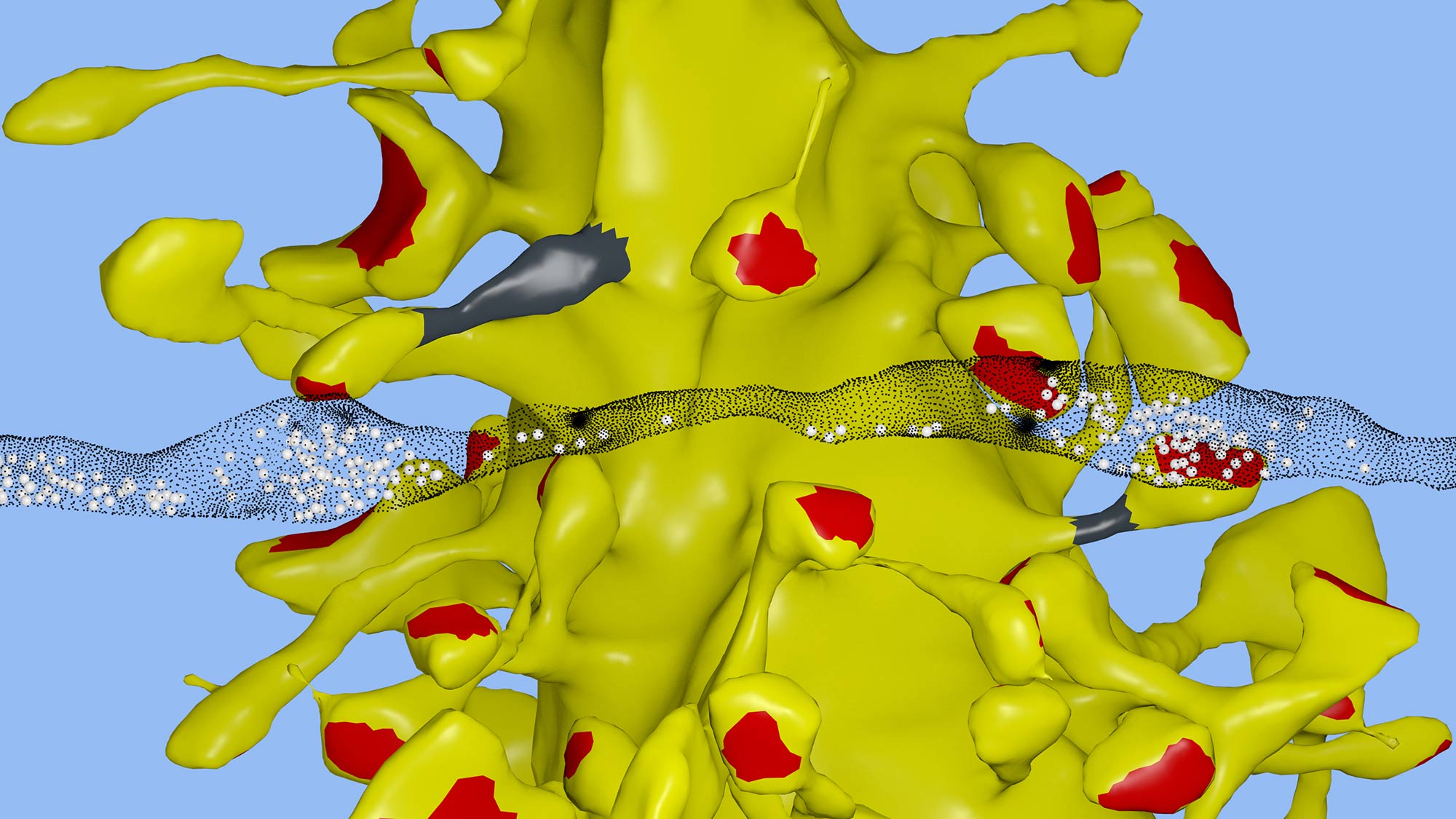
In specially designed labs for the Freshman Research Initiative, dozens of undergraduate researchers work with graduate students and professional scientists to conduct their own novel investigations into never-before-answered questions in science beginning in their first year on campus.
A team of scientists led by Livia Eberlin of The University of Texas at Austin invented a powerful tool to make cancer treatment safer and more effective. In early experiments, it accurately detects cancer during surgery — testing about 150 times faster than the existing technology surgeons use and with better results.
Science Based in Human Experiences
Gearing Hall
Through the halls and picturesque courtyard of Gearing Hall have walked true giants of child development, nutritional science, public and community health, and textiles and apparel. Among them were some of the first women to chair university departments anywhere—and to preside over this University in particular. Here big thinkers came up with ideas that have changed the contours of fixtures in many everyday lives, shaping the trajectory of everything from Sesame Street to Head Start preschools. And today students and researchers continue delving deeply into the science at the crux of our human experiences. For Longhorns that means getting real—in laboratories, research, internships and projects — with learning that’s active and ideas that matter.


Exhibits of beautiful fashion, from historic gowns held in a collection by the Division of Textiles and Apparel to designs by today’s students, can be found on display on the entry floor of Gearing. Upstairs, faculty harness scientific thinking, mathematics and cutting-edge technology to develop breakthrough fabrics and material with capabilities unlike anything that’s existing today, including fabrics that can hold an electrical charge and power equipment. A great deal of science goes into fashion, so more than 200 textiles and apparel majors learn about chemical and physical properties of fibers, fabrics and finishes. They learn how to combine visual art with marketing, cost analysis, product development and human behavior, while also studying the delicate science of preserving historic garments and fashion artifacts, as well as adopting newfangled technologies that aid in the design process.

Public health is rooted in lessening health disparity and noticing trends in different demographics. That is what I'm passionate about. It’s interdisciplinary and it’s global, with a mixture of statistics, culture, history, social sciences and natural sciences. It will make me a more well-rounded doctor. – Kayla Eboreime, pre-med and public health major
Public health is one of four undergraduate majors housed in the School of Human Ecology, along with Human Development and Family Sciences, Textiles and Apparel and Nutritional Sciences.

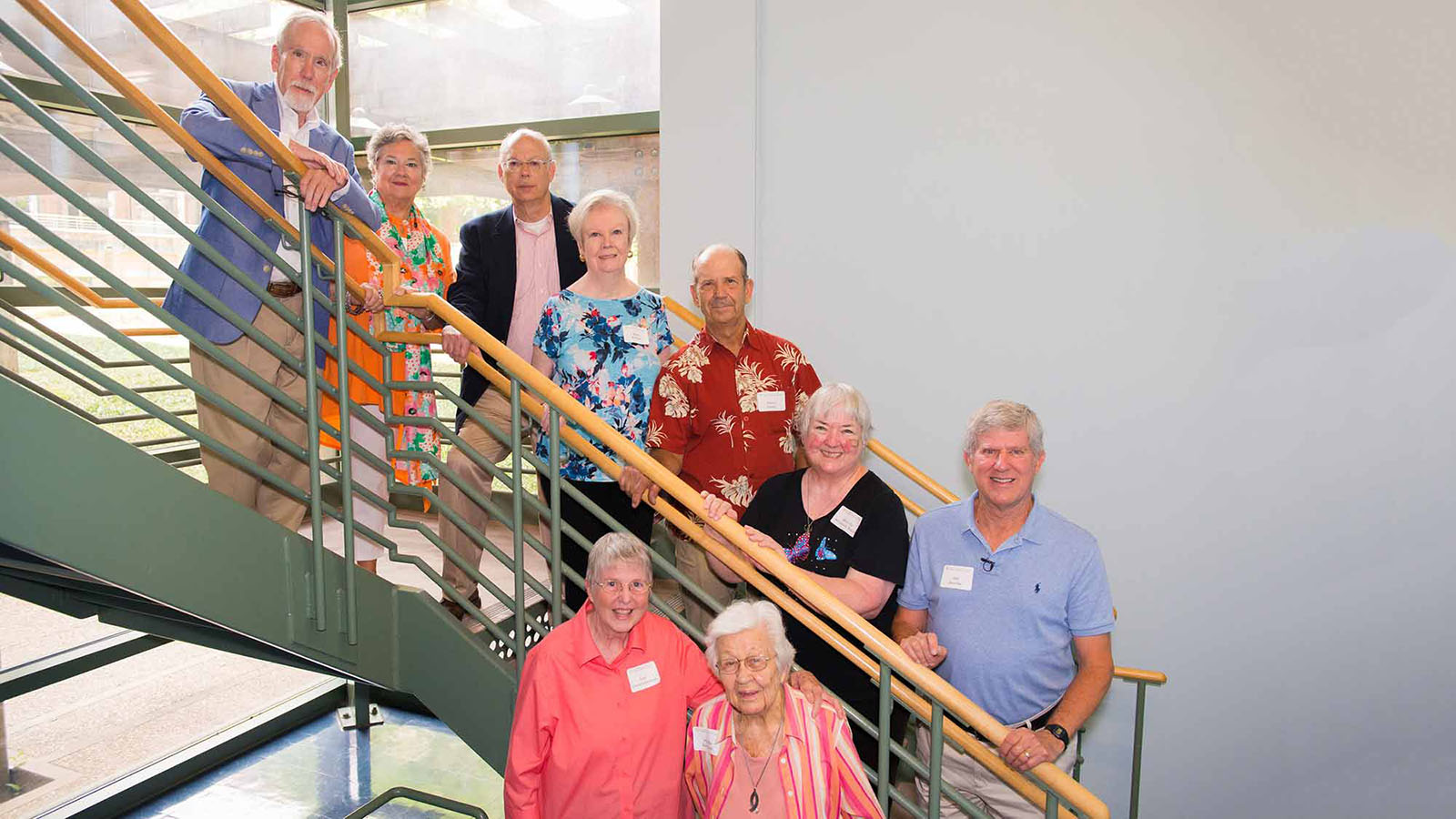
For nearly a century, local preschoolers have learned on campus, while child development researchers learn from them. One class returned to campus 70 years after they were preschoolers together and reunited with their UT teacher.
A Scientific Hub at UT’s Heart
Welch Hall
The largest academic building on campus, Welch Hall serves as a nucleus of discovery, learning and research, as chemists, biophysicists, molecular bioscientists and students blend approaches to make cutting-edge discoveries. The people who walk these halls begin in one area, like our highly ranked chemistry program, and go on to create lasting impact in industry, academia and government. This is hallowed ground, where discoveries have been made that mean life-saving medical diagnoses and technologies that improve the devices which today power our lives. The project list continues: from solar energy to microprocessors to determining the structure of proteins responsible for Alzheimer’s disease. Modern research and learning spaces here are catalyzing the next generation of breakthroughs.
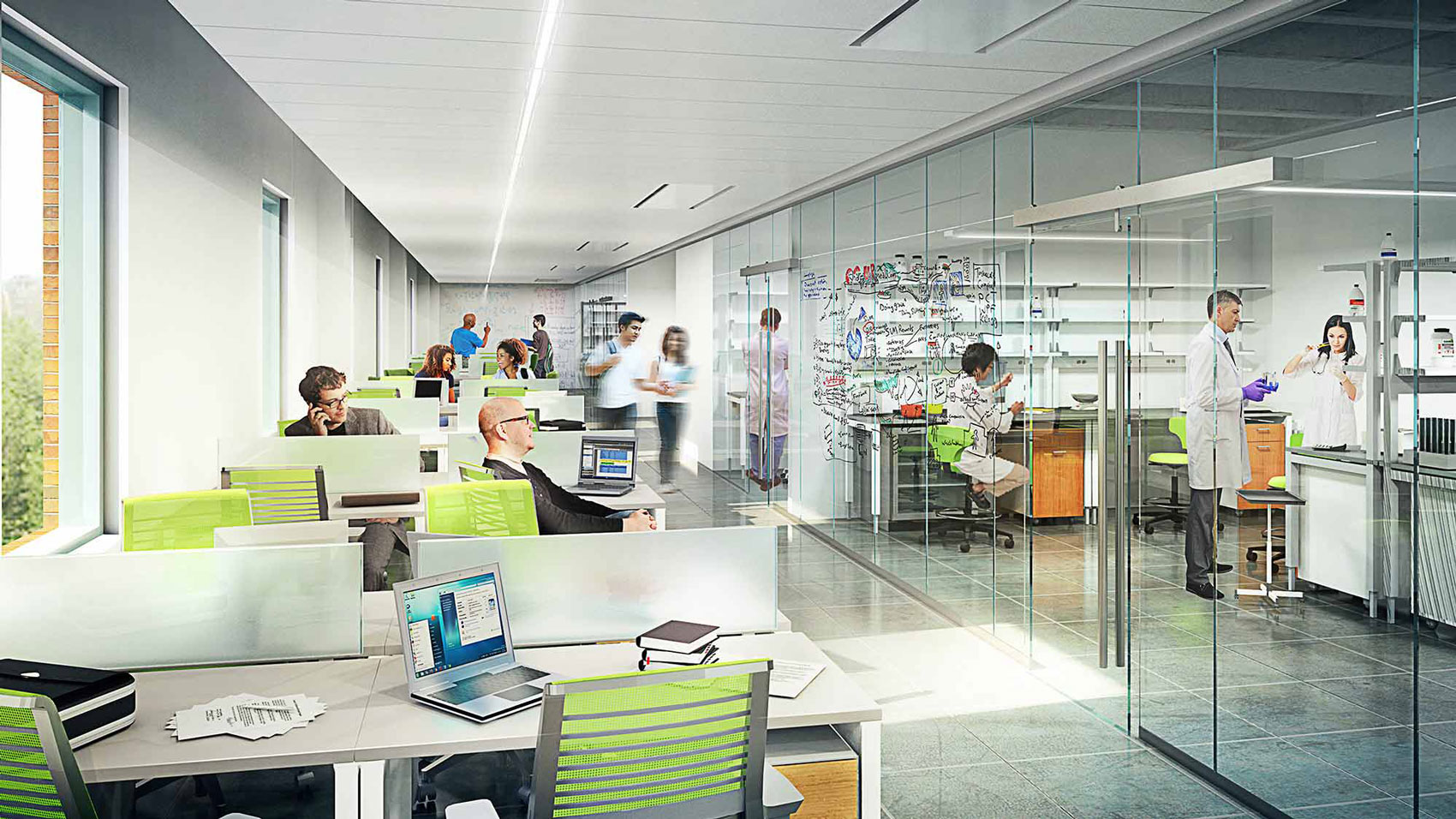
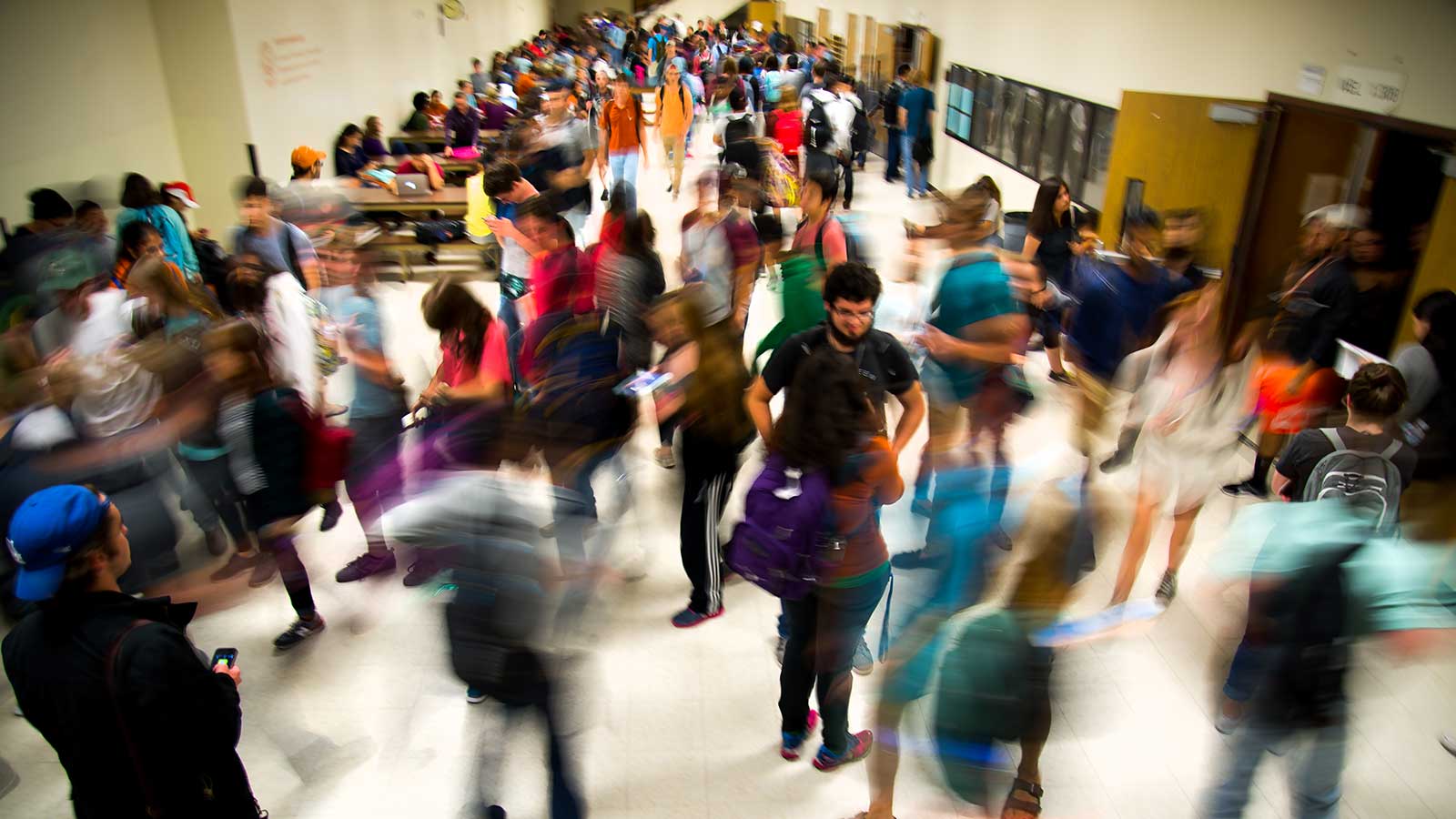

The building, currently under renovation, is known for its grand hallway, which when it reopens will be a brightly lit gathering area celebrating scientific discovery and community on the UT campus.

For more than seven decades, chemistry research here has been linked to breakthroughs that help prevent birth defects. In 1941, in the original wing of the building, UT biochemist Esmond Snell discovered folic acid, which was later shown to prevent birth defects like spina bifida. Decades after Snell’s experiments (involving four tons of spinach!), a scientist who studied under Snell helped to train Dean Appling, a current professor in the Department of Molecular Biosciences. Appling was among the scientists who urged fortifying more foods with folic acid. The change has led to a dramatic drop in birth defects and related disabilities and deaths in babies around the globe. Working in Welch Hall, Appling’s team also discovered a gene that, when functioning improperly in mice, causes embryos to be born with birth defects. He continues, alongside other faculty on campus, to research factors in the prevention and treatment of birth defects.

Professor Eric Anslyn's “Supramolecular Sensors” research stream, a lab within the Freshman Research Initiative, lets students apply technology to construct differential chemical sensors that are capable of distinguishing the subtlest of differences in various samples. The tests can illuminate different varietals of wine, for example, revealing—forensic-investigator style—the chemical fingerprints of a wine sample. That can be helpful in preventing counterfeits and a lot more.
“I like to present cool case studies of scientists using techniques similar to ours to detect diseases,” says Brenden Herrera, now a graduate student and mentor for the lab that he first entered as an undergraduate researcher himself. “We have to make it relevant.”
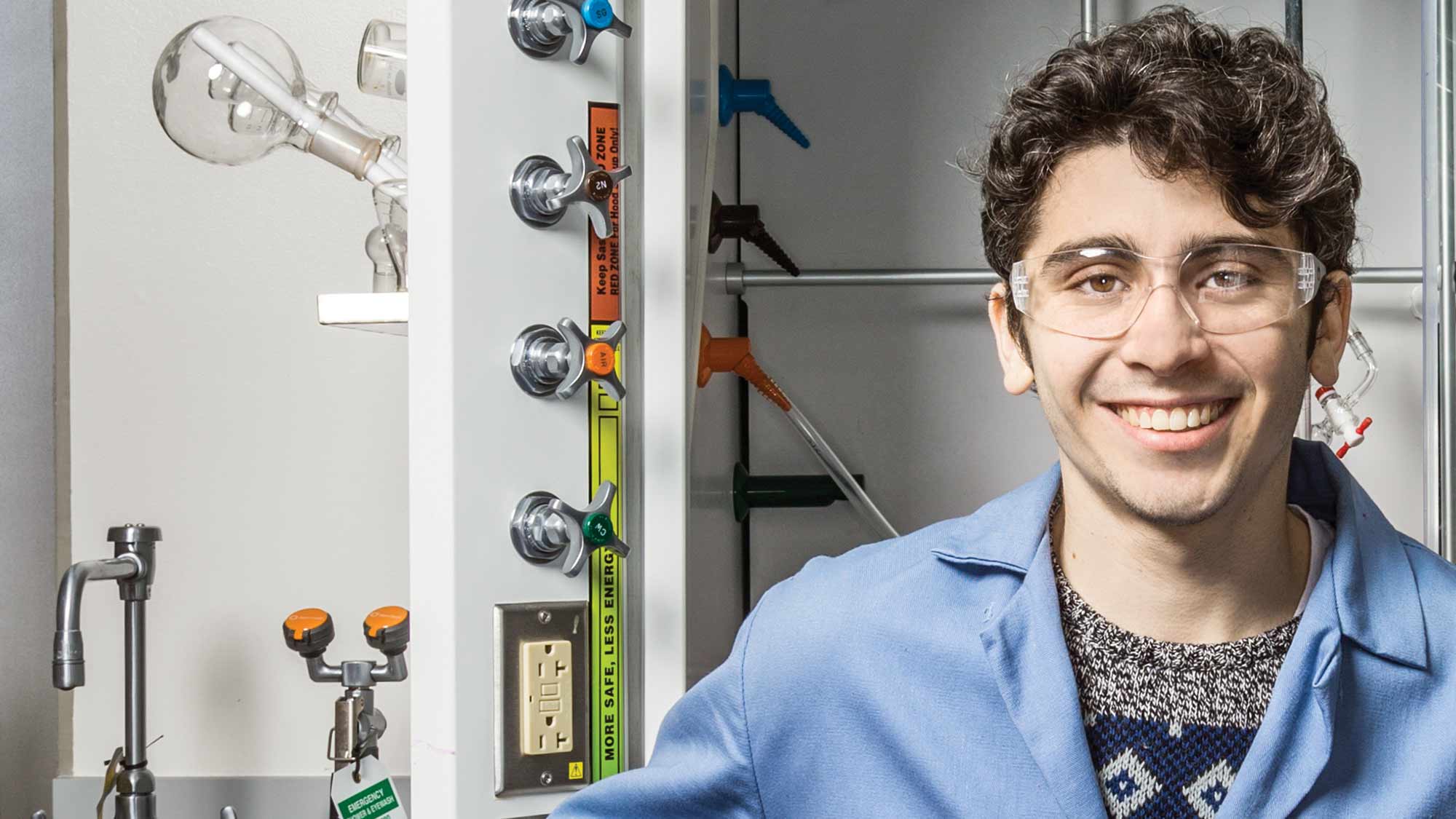
Pushing Beyond the Known
PMA
On a campus where we say, “What starts here changes the world,” people in the Physics Mathematics Astronomy building know that what starts here changes conceptions of the universe. World-class educational and research programs in physics, math and astronomy usher in new understanding, made possible by mathematical solutions to technological and natural problems and new experimental discoveries about happenings in faraway galaxies or distant solar systems. Physicists established one of the world’s most powerful lasers in the basement; on the roof, campus visitors peer through a telescope to explore the cosmos; and in between, learners and researchers unravel mysteries in some of the nation’s best-ranked programs in mathematical and physical sciences. The top-to-bottom boundary-pushing happens not only here but also beyond these walls, as these scientists leverage the power of world-class facilities like UT Austin’s McDonald Observatory in West Texas and the Texas Advanced Computing Center at the JJ Pickle Research Campus.
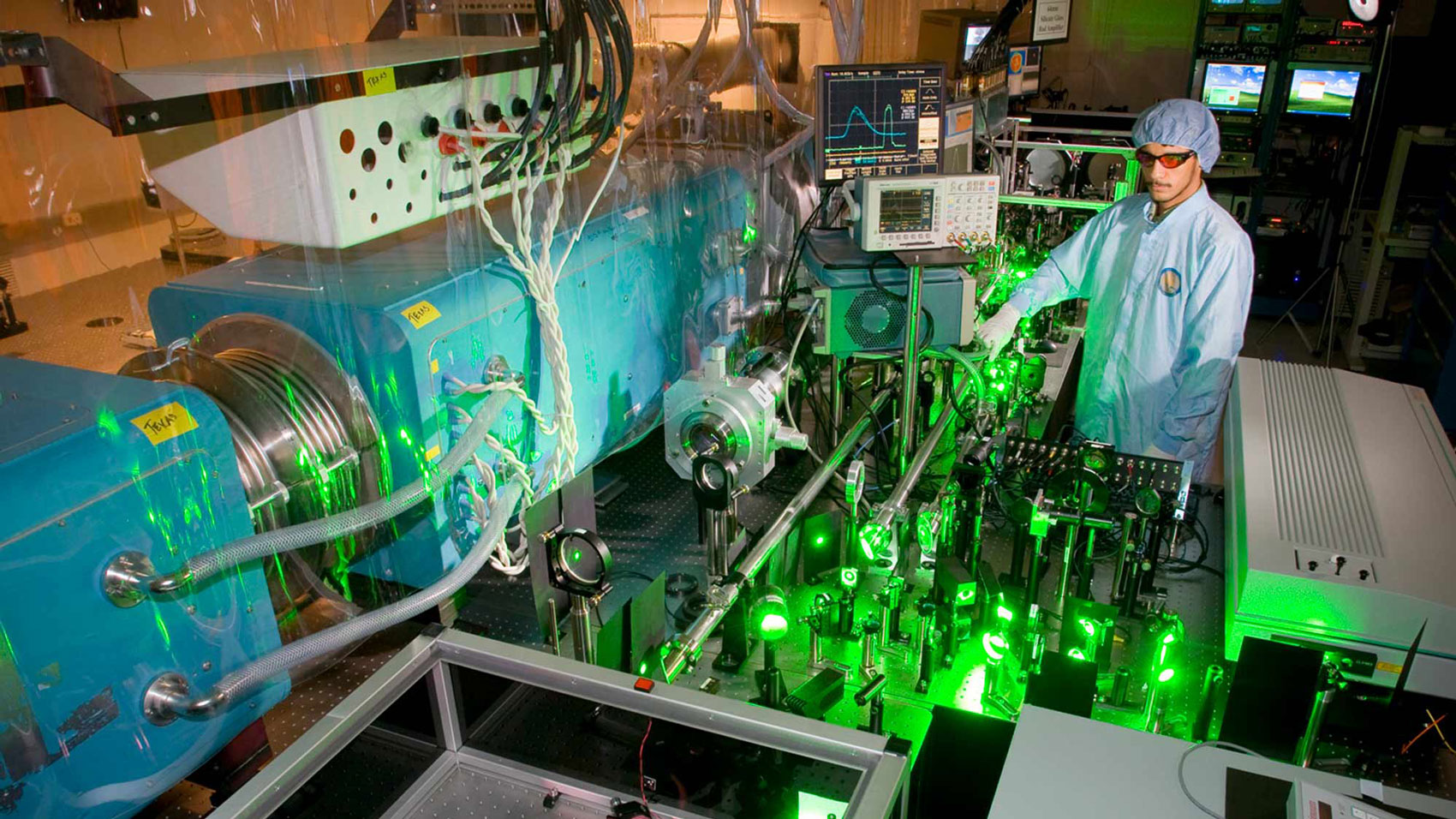
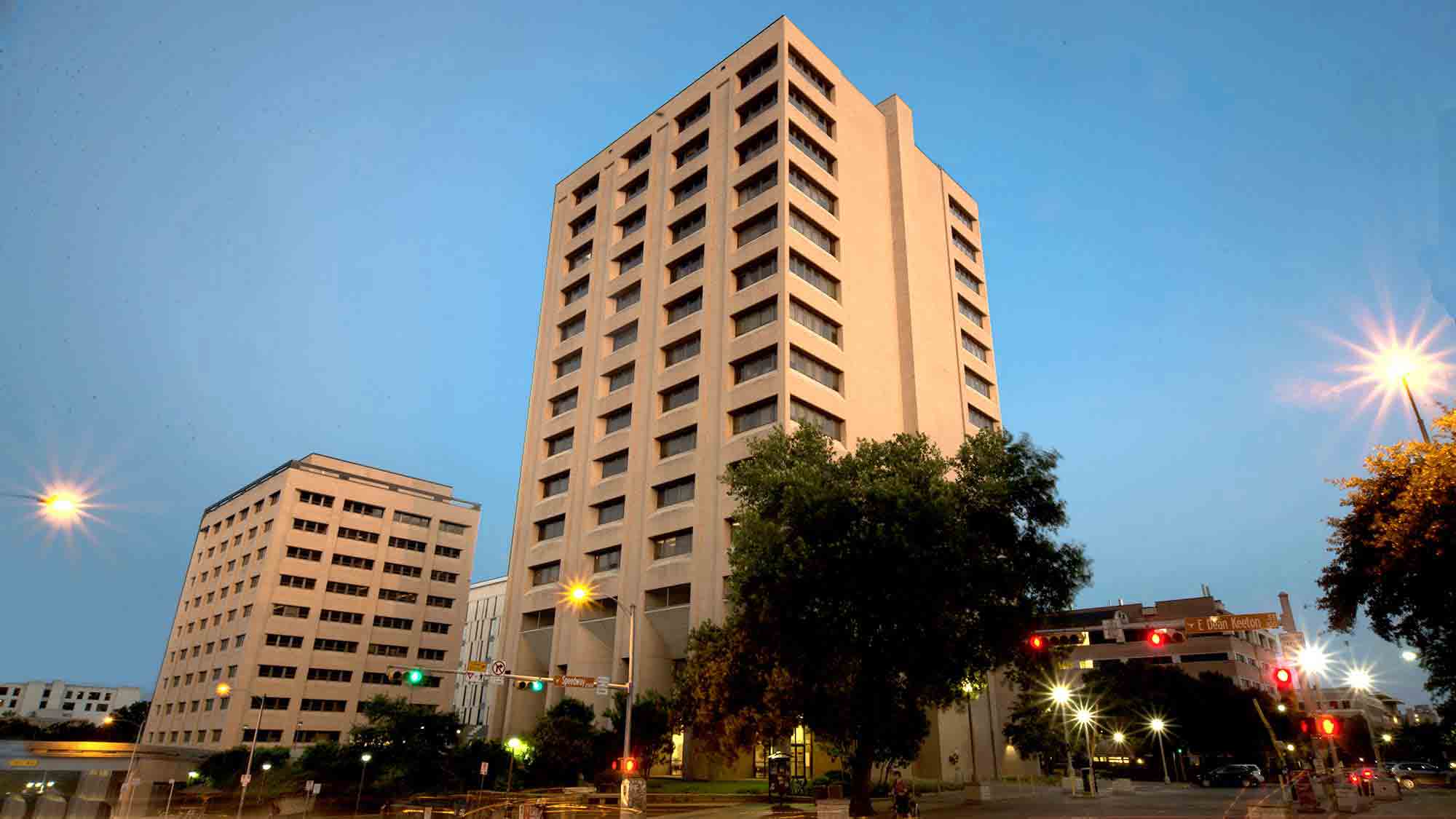
The entry floor of the building, on the fourth floor, is home to one of the most prominent on-campus displays of winners of the annual Visualizing Science contest. Hosted by the College of Natural Sciences, the competition celebrates where art and beauty collide with science and the scientific process, as hundreds of students, faculty and staff researchers submit their favorite images of their work. Among the winners in 2017 was mathematics graduate student Arun Debray, whose image shows a Newton fractal. To make it required applying what is known as Newton's method to understand where a function is equal to zero. Small changes in the input can lead to large differences in the output, resulting in the fractal graphed here. Color represents the output of the algorithm, while shading represents its convergence time.


Whatever the final laws of nature may be, there is no reason to suppose that they are designed to make physicists happy.
— Nobel Laureate and Professor Steven Weinberg, who is among the faculty investigating some of the biggest questions in astrophysics, involving string theory, black holes and unanswered questions about the universe.
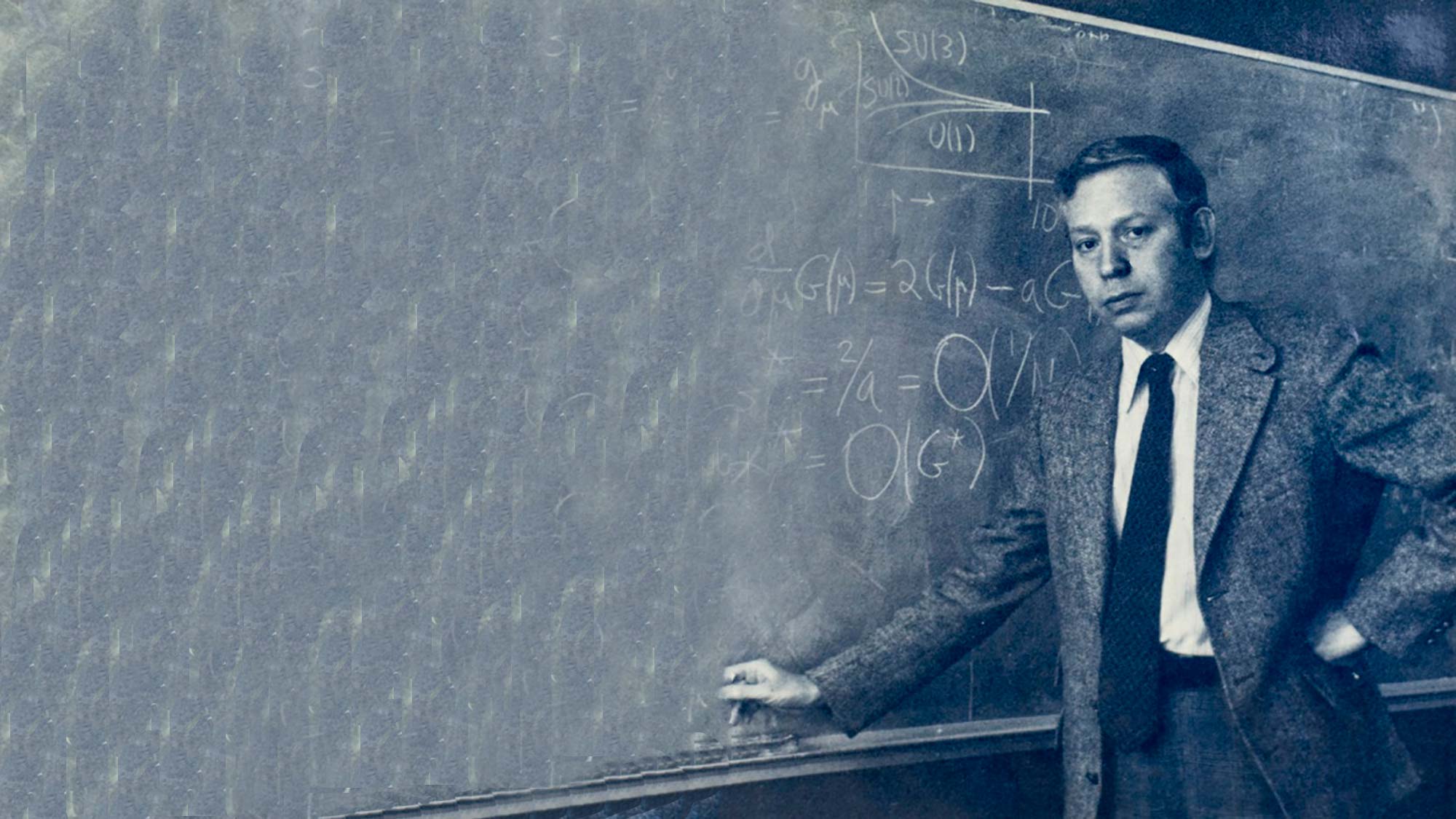
Weekly star parties on the roof of the building that houses the departments of both astronomy and physics bring students, scientists and Austinites together to stargaze and learn.